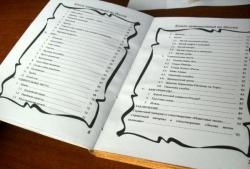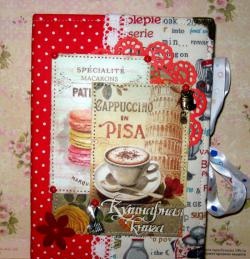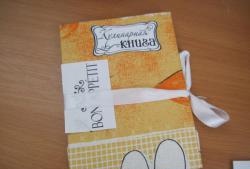The tearing of the endpaper from the book block is the most common “disease” of school textbooks, which have been passed through the hands of students for years. For repairs, they often use adhesive tape or just a strip of paper, but both options provide only a short-term effect, since the adhesive tape quickly loses its adhesive properties and the paper tears. In order for the book to keep its shape for a long time, it is recommended to use reinforcing threads, which are gauze, to connect the book block with the endpaper.
To restore the book you will need:
- a strip of gauze bandage with a length equal to the height of the textbook;
- PVA glue;
- scissors;
- graphite pencil;
- paper.
Progress in restoring the book
Peel off the endpaper from the binding cover approximately 1 cm along the entire length of the spine.
Apply glue to the area exposed after peeling off the endpaper.
Place gauze on top, soaking it with glue.
Glue the previously detached endpaper over the gauze.
Place a file or plastic film on top, and press the book down at the gluing site with a press.
Leave the textbook alone for an hour so that the PVA has time to “grab” with gauze and paper.
For the convenience of further work, place another book of similar thickness under the cover of the textbook on the left, and support it with another textbook on the right.
Draw and cut a strip from a sheet of paper, the width of which is 2.8 cm, and the length is equal to the height of the textbook page.
Bend the strip in half lengthwise, thereby defining the fold line of the book.
Cut off the unnecessary gauze, leaving it about 1 cm wide.
Apply a strip of PVA along the edge of the book block, place gauze on top of it, soaking it with glue.
Apply glue to a strip of paper and glue it over the endpaper and book block, thus connecting the two parts of the book together.
Close the textbook, having previously placed a file inside to prevent the pages from sticking together, and press down with a press for 3 hours. Then remove the file and dry the book overnight.
After a day you can use the textbook.



























